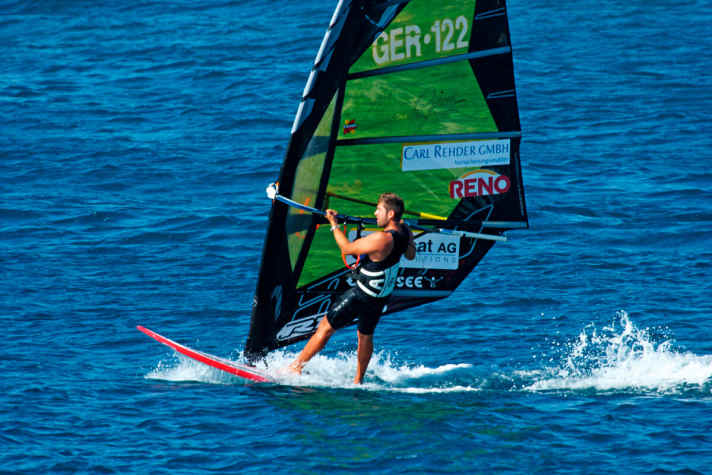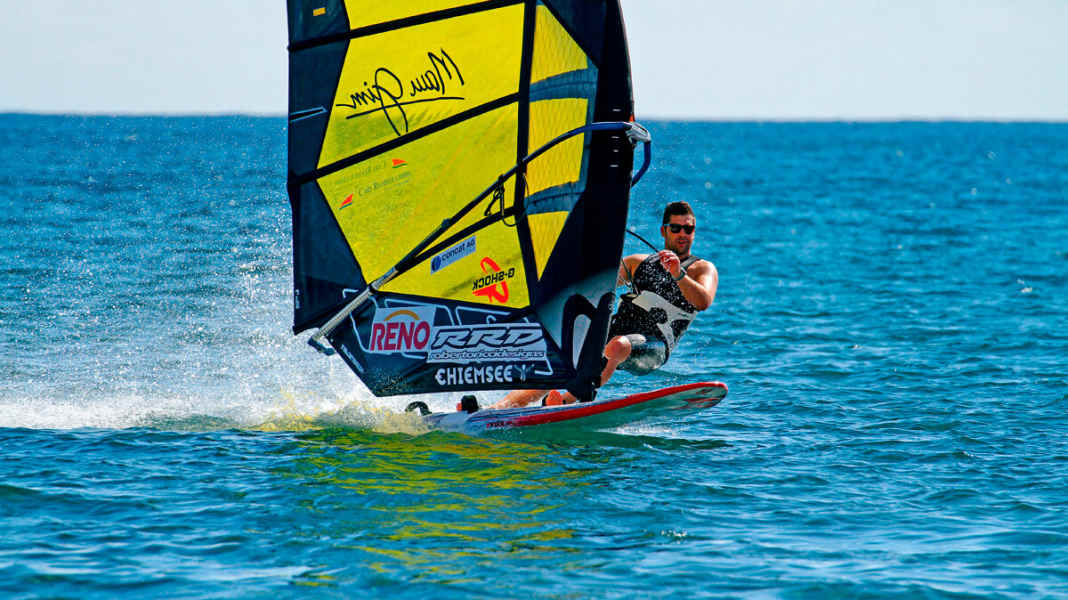
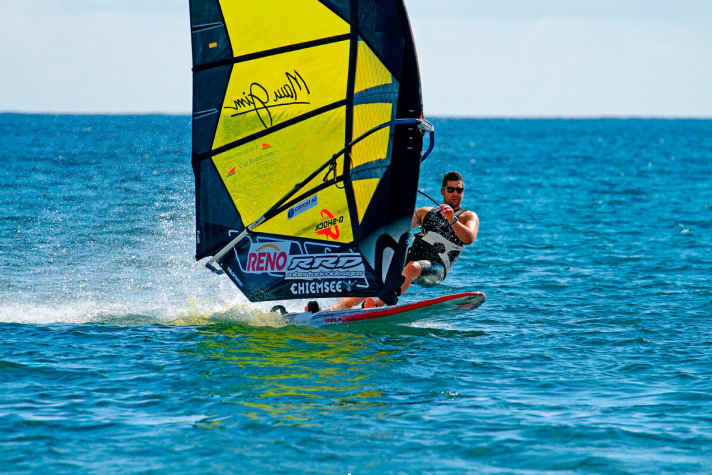
Whether at a quarry pond or by the sea, as soon as the water starts to ripple and a few whitecaps can be seen, there's no stopping any surf addict. Then it's just a case of rigging up as quickly as possible, fin into the board, wetsuit on and off you go. Unfortunately, once on the water, disillusionment follows every now and then when you realise that the wind is a hair's breadth too light. The initial cries of joy sometimes turn into wild swearing, at least if you still have air to spare after 30 seconds of pumping in the dubious speed range. But it could be easier, because if you turn the right screws, you will still get your daily dose of gliding.
Just try to take the following tips to heart, in principle they are the same adjustments I also make in formula and slalom races in light winds. These are: Mast foot position, fins, luff and boom trim, body position & pumping technique.
1st mast foot position
There is still the age-old myth that the mast base should be fully forward in light wind! In slalom, freeride and formula sailing, this wisdom should actually be heeded. The mast foot at the front end of the mast track transfers the power of the sail as close to the bow as possible, which relieves the stern. As a result, it displaces less water, which leads to earlier planing.
Vincent's TIP: In normal gliding wind conditions, move the mast foot to the centre, in planing conditions move it forward two centimetres at a time!
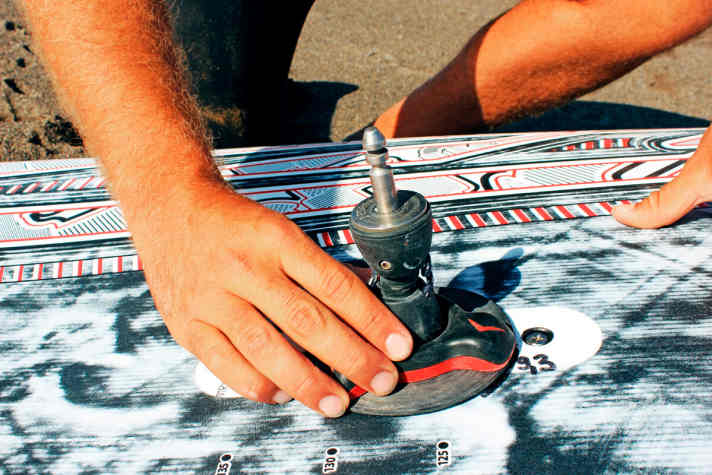
2. fins
The Finn harbours well-kept secrets. But a little basic information can go a long way. In order to glide, we need lift, which is produced by the fin. A fin with a large surface area generates a lot of lift and therefore helps to overcome the glide threshold earlier. In this respect, the profile thickness is also important, because the "bulkier" the fin, the better. A thick profile generates more lift, even if it is usually somewhat slower than thin profiles in strong winds. A soft fin also has a positive effect. When it comes to planing, the shape should be disregarded, regardless of whether it is freeride, freerace or slalom. This only plays a role when gliding.
Vincent's tip:The perfect "planing fin" is relatively large in terms of surface area, thickness and length and is as soft as possible!
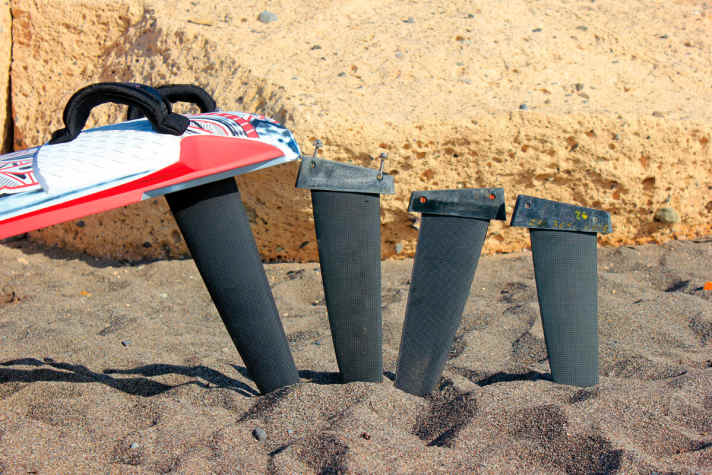
3. luff trim / loose leech
Luff tension creates "loose leech" in sails (the flutter in the top). This is important for the acceleration and handling of the sail. In strong winds, the loose leech (the rear side of the sail) can turn away and therefore cushion gusts. When it comes to early planing, luff tension should be used sparingly, as too much tension creates loose leech, which opens the top of the sail and reduces propulsion. In addition, the profile and the leading edge (at the mast) become flatter, which has a negative effect on planing. Furthermore, the sail itself becomes harder, which makes pumping movements (see point 6) less effective.
Vincent's tip:Little luff tension brings early planing. Nevertheless, some loose leech is needed for handling and to create a decent profile. All modern sails require at least a little loose leech (exception: raceboard sails for longboards)
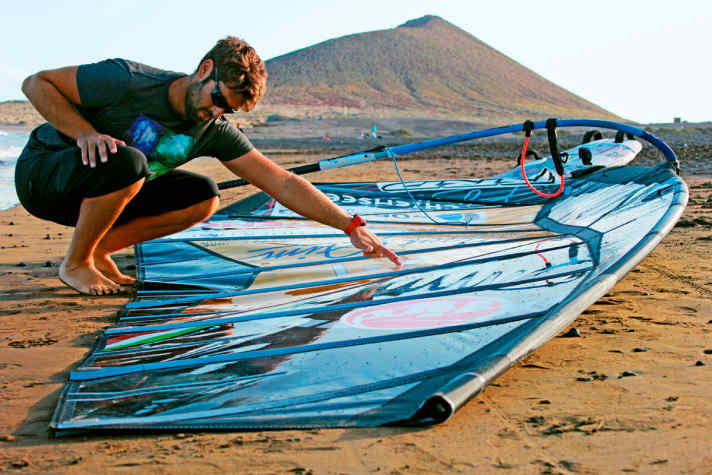
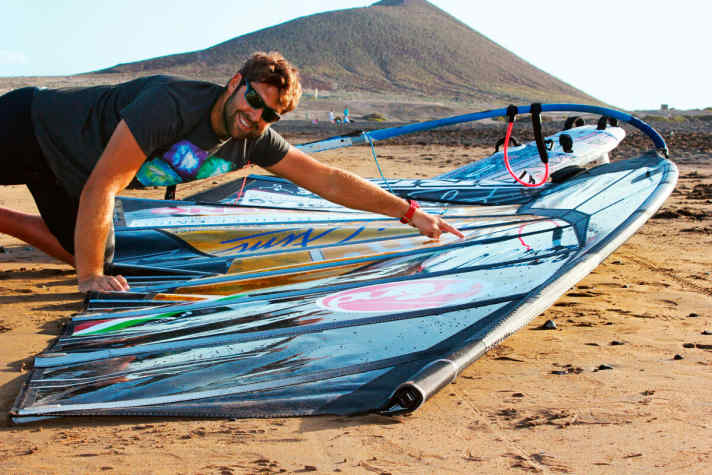
4. tuning the fork
The boom with all its settings is extremely important.
Fork height: The old "eye height rule" is a good guide and, in my opinion, is recommended as a height recommendation on wide freeride and slalom boards. The wider the board, the higher you need to set the fork on land. Moving the fork upwards - just two centimetres is clearly noticeable - improves power transmission. The sail pressure increases and planing and gliding through wind holes improves noticeably. If the boom is too low, this produces higher lateral forces and less propulsion in light winds.
Vincent's tip:A high fork gives more power! But be careful: If the fork is too high, it has the opposite effect! Therefore, if necessary, try to gradually move the fork upwards by two centimetres.
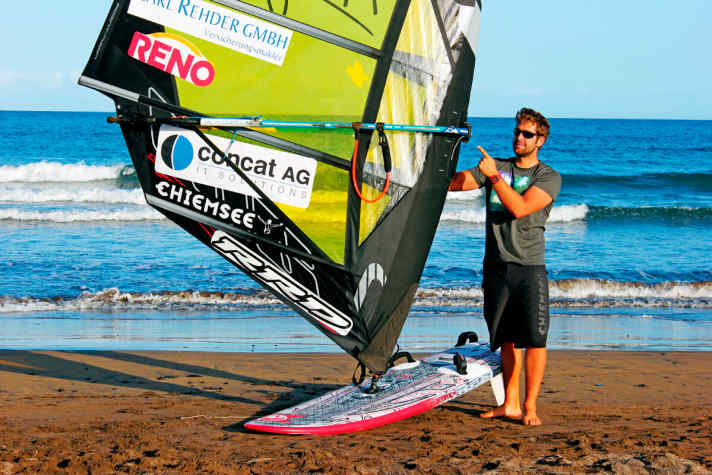
Tensioning on the trim sheet:You can change the profile depth of the sail at the end of the boom. Basically, the following applies: In light winds, the sail may touch the boom up to the trapeze lines, regardless of the sail size. This setting also softens the sail profile, which is helpful for planing/pumping.
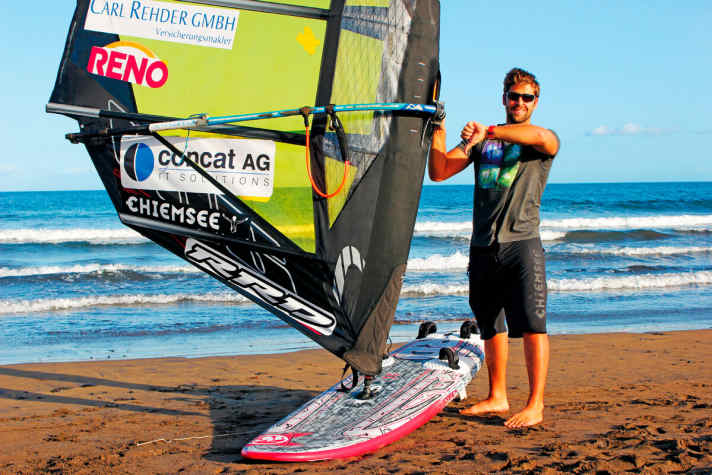
Clew eye:Many new sails have several clew eyelets. Always use the upper one when there is little wind, as the leech of the sail then remains closed and more power is developed.
5. body position
Where do I stand on the board so that the boat finally slides? When planing without active/strong pumping movements (you are still hooked in), a wide stride is an advantage. This offers stability and the opportunity to position the front foot as close as possible to the mast foot. This places the load in the centre of the board, which makes planing easier as the tail has less draft and therefore less water displacement. Also try to turn the front foot in the direction of travel to improve power transmission. Once you have overcome the planing threshold, it is advisable to quickly change your foot into the front loop.
Vincent's tip:Try to actively load the mast foot by positioning your weight as far forward as possible on the board.
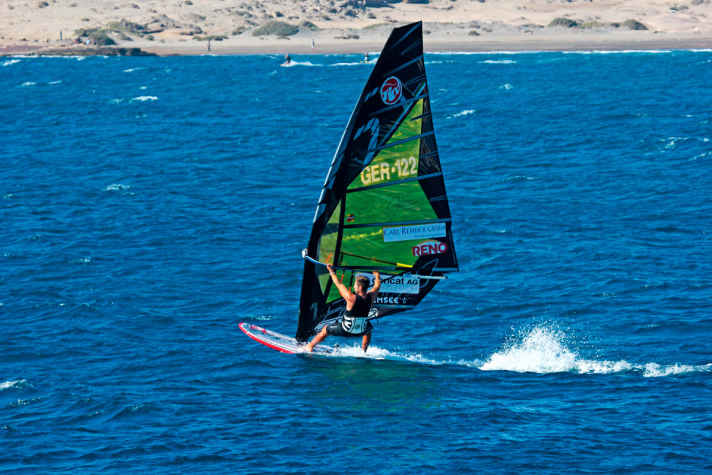
6. pumping
Effective pumping requires a lot of technique and even more strength. However, it definitely helps to overcome the sliding threshold earlier. It therefore makes sense to briefly explain the key points of correct pumping here.
Before it starts:Set off on a light downwind course. Take a wide stride to have a secure stance, the front foot is quite far forward to load the board in the centre. As with normal planing, the front foot should be turned in the direction of travel. This also causes the hips and upper body to turn slightly forwards, so that the power transmission of the pumping strokes takes place forwards instead of to the side. A wide handle on the fork helps to transfer the sailing power in the best possible way.
Vincent's tip:I often grip from below with my front hand, as I then have more gripping power and can pump better, especially with large sails over eight square metres.
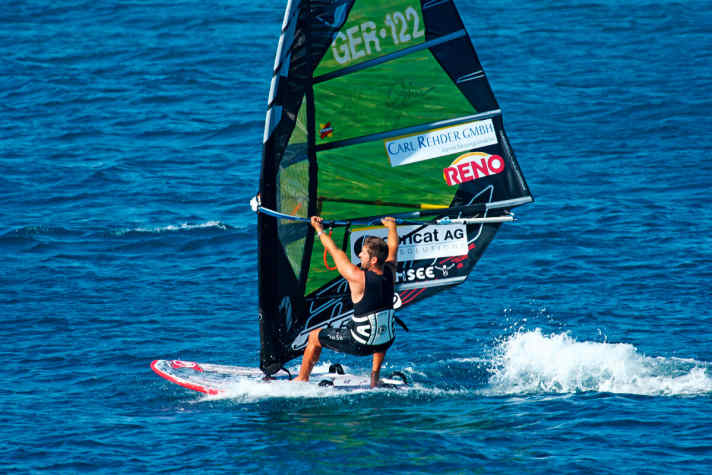
The sail is pulled up as explosively as possible, with the mast being pulled as far to windward as possible. The return to the starting position is somewhat slower than pulling the sail in. Only when you are planing do you carefully hoist the sail.
